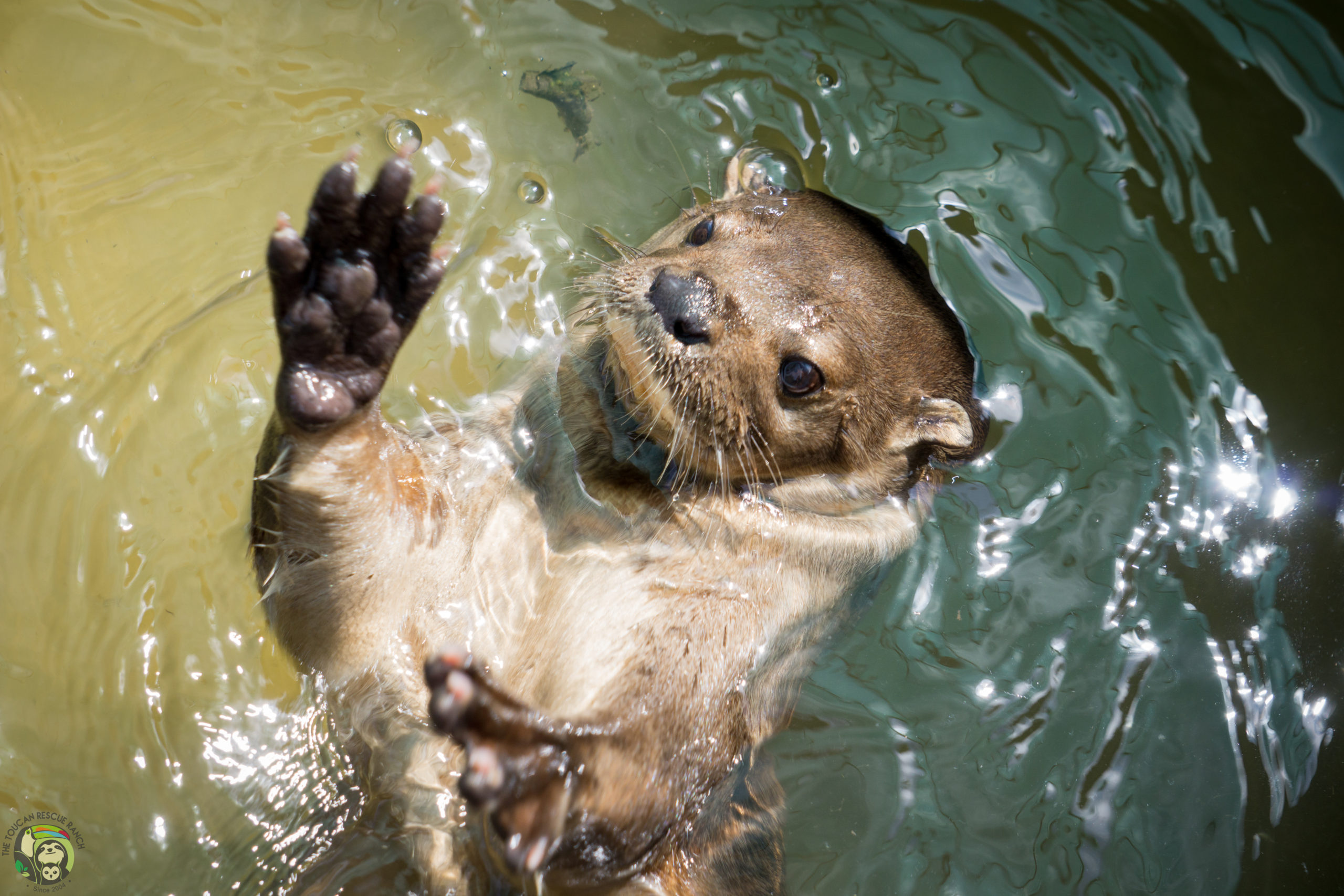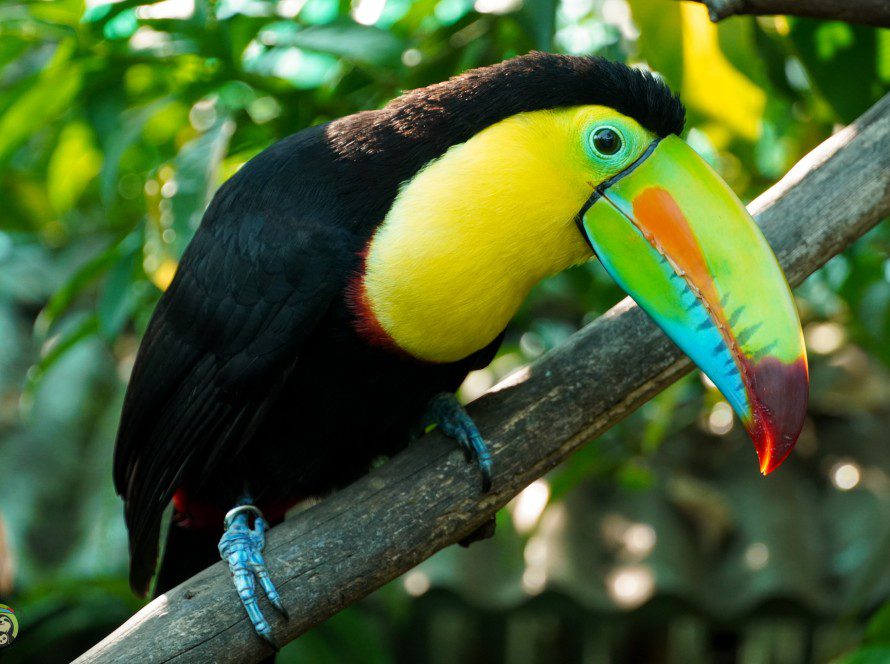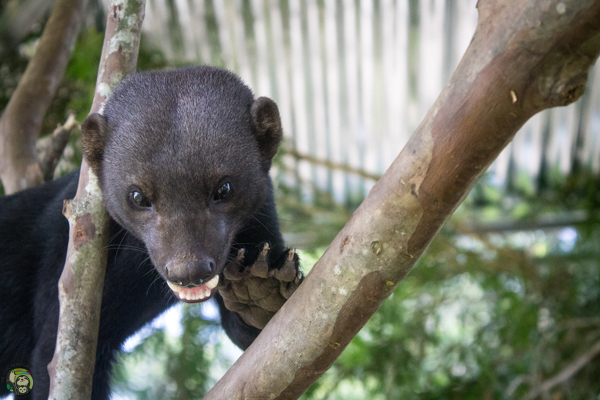Lontra longicaudis, L. longicaudis
- CLASS: Mammalia (Mammals)
- ORDER: Carnivora
- FAMILY: Mustelidae
- GENUS: Lontra
- SPECIES: longicaudis
About the Neotropical River Otter
Neotropical river otters are the only species of otter found in Central America. They’re mustelids, closely related to weasels, tayras, and badgers. But unlike most other mustelids Ottes are specialized for a life in the water. The name “Neotropical river otter” derives from their habitat in the American tropics, while its name otter derives from a Germanic word meaning water snake, referencing their sleek coat and graceful swimming abilities. In Spanish, they are commonly known as nutria or ‘Perro de Agua’. The latter name can be translated to “water dog” and they are commonly known by this name for their playful attitude and a passing resemblance to a dog that lives in rivers. Nutria is derived from the Latin Lutra which vaguely means “animal that lives in the water”. Its scientific name Lontra longicaudis literally means long-tailed otter, which pretty much describes the animal.
Otters are an animal like no ‘otter’. Long and slender, they mostly resemble their close relatives, weasels, and martens with some quite specific differences. Otters are generally elongated, with extremely flexible spines, allowing for the quick up and down motions needed for underwater locomotion. Neotropical river otters are sexually dimorphic with males being about 25% larger than females.
As their name might imply Neotropical river otters have very long tails, flattened top to bottom, which they use as their main means of aquatic locomotion. Their tails are so long in fact that they can be even larger than the rest of their bodies. Their tails are also pretty wide, the ticker at the base while tapering off to a point. A Neotropical otter’s head is generally small and flat with small rounded ears. In regards to their coat, it is generally short, dense, and quite sleek of a lustrous and shiny brown coloration. Their coat is also generally paler on their underside with particularly pale or yellowish spots on their lips, around their cheeks and eyes. Otters also possess 4 stubby legs with webbed feet.
Neotropical river otters are avid swimmers, being able to swim upside down as well as on their sides. They can stay submerged for extended periods of time, up to five minutes! This is achieved because they can lower their heart rate while submerged, requiring less oxygen. Otters can also see quite well underwater, although this rarely serves much of a purpose for river otters as their preferred environment is usually murky, muddy water. Neotropical river otters can also close their nostrils and ears while diving. River otters have some of the strongest jaws among mustelids as well, well adapted to a diet of cephalopods and crunchy invertebrates. Like other carnivorous mammals, otters have whiskers on their upper lip. These whiskers give otters an extra good sense of touch, and it gives them the ability to detect changes in water current as well as the ability to hunt in low light and murky conditions.
An otter’s fur is their pride and joy. Otters constantly groom their fur keeping it in the best condition they can! This is because otter fur is very complex, it consists of two layers: a dense air trapping undercoat and a waterproof topcoat made of guard hairs. This configuration is also the reason why when we see otters coming out of the water we see their overcoat stuck together like wet spikes while the fur underneath remains dry. Most aquatic mammals have a layer of blubber that prevents heat from escaping, keeping the animal warm in cold water, but the air trapped inside of the undercoat of otters fulfills the same purpose, keeping them warm and allowing them to not have blubber.
Like most other mustelids Neotropical river otters have anal scent glands which secrete a pungent, musky smell. This smell is used for interspecific communication, as it seems otters will mark landmarks in the places where they spend their day. Curiously enough, it’s highly unusual for otters to mark their place of sleeping as they only seem to mark their sites of activity. Otters generally love both grooming and new smells and it’s not unusual to see TRRs Otter, Emma playing around with new smells, rubbing herself on them, and playing.
Otters are avid predators but they may also be hunted by a variety of other carnivores. Jaguars, caimans, alligators, and occasionally some birds of prey are some of their potential predators.
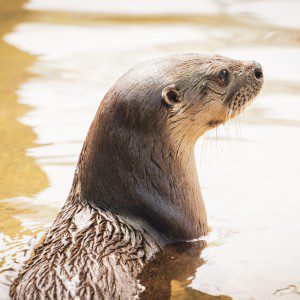
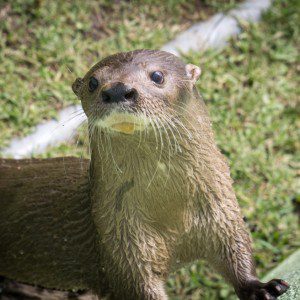
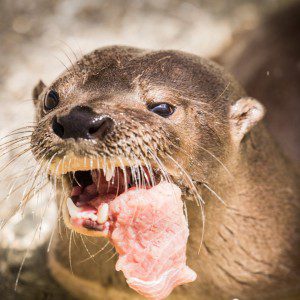
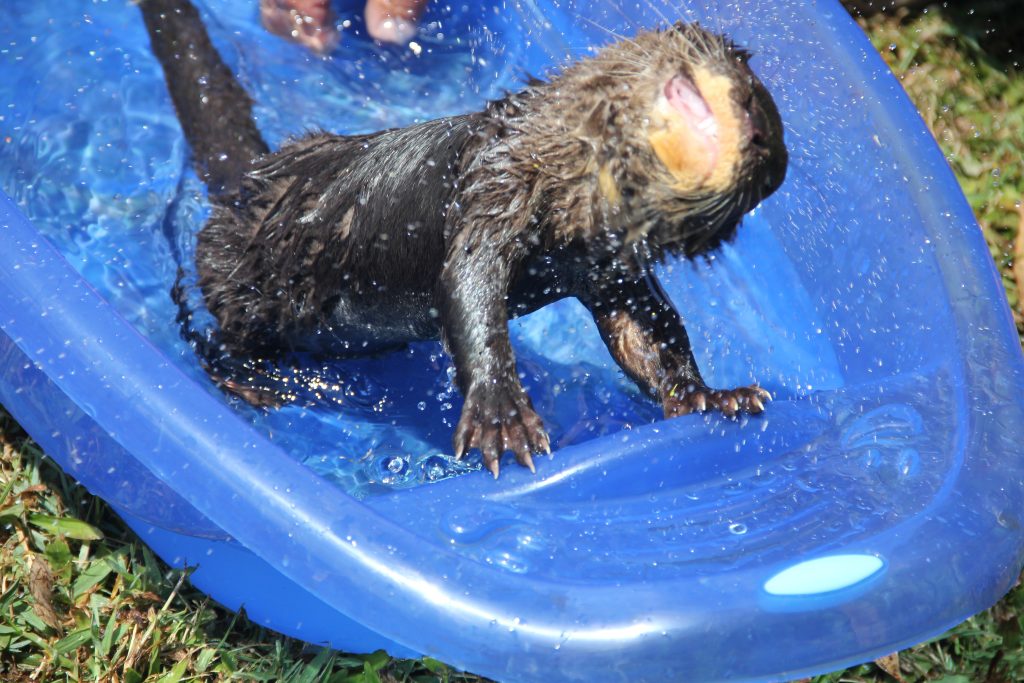
Habitat and Diet
Neotropical river otters are found in most biomes with access to water except for the high elevations of Mountain environments. They range from Northwestern Mexico all the way to the Northern parts of Argentina, including Uruguay and Paraguay in South America. This makes the Neotropical otter the most widely distributed species of the genus Lontra. These otters are found in all sorts of riverine habitats, including deciduous and evergreen forests, savannas, llanos, and even Pantanal. While they prefer clear, fast-flowing rivers and streams, otters can also inhabit quite impressive habitats like rice and sugar-cane plantations, drainage ditches, swamps, and even glacial lakes. They can also sometimes be found on the shorelines of marine environments, hunting marine species and playing in the saline water.
Neotropical otters, like most otters, are semi-aquatic, but unlike most otters, it seems that this species may spend extended periods of time on land and even use caves for its burrows. This is exemplified by the fact that while in most otter species their places of sleep have at least one underwater access this is not the case for Neotropical river otters, sometimes having only terrestrial accesses.
While slightly clumsy on land Neotropical otters can move quickly by using a humping gallop, keeping their head and tail low, with a high humped back and bringing the back legs to the front legs quickly. Neotropical river otters can be both diurnal and nocturnal, spending most of their day along with permanent water sources like rivers or streams. Neotropical river otters are quite adept and opportunistic piscivorous, hunting a wide variety of small to large size fishes, crustaceans, and mollusks.
Neotropical otters are considered to be quite opportunistic due to their willingness to eat animals such as insects, reptiles, birds, and even small mammals when encountered. It’s commonly said that this species forages all throughout the day with peaks of activity in the late afternoon and rare nocturnal activity, but in Costa Rica, as rivers keep being invaded by humans it seems that some wild populations have adapted to have a mainly nocturnal activity pattern. An otter’s diet seems to be highly adaptable and dependent on its environment. Since Neotropical river otters are found in all sorts of fresh and brackish aquatic environments it’s not unusual to vary their diets accordingly, including different species and in different proportions depending on the location.
Emma, TRR´s only neotropical river otter is fed a commercial carnivore diet complemented with either Marlin or Tilapia as well as many other fishy traits as enrichment.
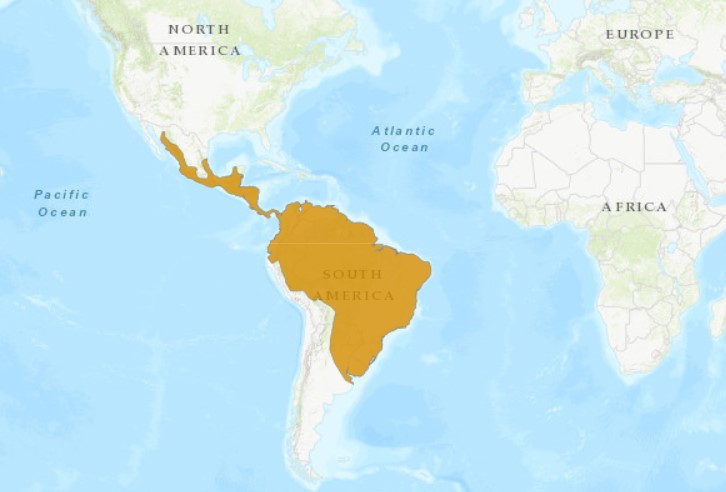
Behavior and Family Life
While most of otters time is spent foraging for food, a big chunk of it is also occupied by grooming, unlike most other carnivores who groom themselves by licking, otters groom themselves by biting, scratching, and rubbing themselves against grass, rocks, and even logs to keep their fur in the best condition possible.
While very playful and curious, unlike most other otter species Neotropical river otters are quite solitary creatures, who usually keep to themselves. In the breeding season, males will only stay with females for one day and the female will have complete control over the rearing of the cubs. Breeding may occur throughout the year and their gestation period is about 56 days, producing a litter of up to 5 pups. While the pups are born blind they are born with their full fur cover. They will emerge from the nest after about 52 days and will begin swimming by 74 days of age. There’s also evidence for facultative delayed implantation, which means that the female may be able to delay the conception of the pups for an unknown period of time.
Communication between otters is mostly done by chemical signaling with the scent glands and feces, but they may also produce a series of whistles, hums, and screeches. In Areas where humans may threaten otters, a loud “hahh” alarm sound has also been reported.
At the Toucan Rescue Ranch
The only Otter at Toucan Rescue Ranch is our wonderful, playful, fantastic, female, Emma. Emma arrived at TRR after she was rescued from some children that were throwing stones at her and her mother on the river, sadly her mother escaped an abandoned baby Emma, so she had to be taken in and has ever since lived with us at TRR.
Conservation
Neotropical river otters are rarely found in the wild, it is for this reason that the IUCN red list classifies them as data deficient. Despite this, it’s not hard to see that otters just like most other animals are suffering harshly from the effects of the Anthropocene. Otters generally exhibit little fear of humans so they have become easy prey for hunters who may want them for their valuable and beautiful pelt. Otter pelt was a high price commodity during the 1970s, so otters were extensively hunted for it in countries like Argentina, Colombia, and Perú.
Neotropical river otters have earned an Appendix 1 citation in CITES, which prohibits the commercialization of Neotropical river otters and their derived materials such as fur. The species is also protected in several countries throughout their range including Costa Rica.
Some of the dangers that Neotropical river otters face are Continued illegal hunting, water pollution, habitat destruction, extraordinary floods, human pressure, and human aquaculture. Otters continue to be hunted for their pelt to this day due to their beauty and expensiveness, but otters are also sometimes considered a pest species for aquaculturists and fish enthusiasts preferring to eliminate the rather smart otter than allow their fish to be eaten by them. Water pollution due to human intervention like bad water management, mining operations, and agriculture have severely reduced the amount of fish in the otter’s territory, leading to fewer otters in response. Habitat destruction due to agriculture and cattle ranching have diminished the ideal nesting and sleeping spots for the otter population forcing them out of their original range. Human competition for the same resources has also proven to be a tough factor on the animal, as humans, by overfishing have diminished food resources for the otters as well as commonly caught them in fishing nets where they might drown. Human intervention and modification of the land have increased the propensity for floods in what used to be controlled flood plains, generating problems for the otters.
For this and many other reasons, we must continue fighting on, helping in any way we can to keep these marvelous creatures on Earth for many years to come.

Life Span
Life expectancy is 11 years
Young
- Gestation: 56 days
- Number of young at birth: 1 to 5
- Age of maturity: 2 years
Size
- Length: 14 to 26 inches (36 to 66 centimeters)
- Weight: 11 to 33 pounds (5 to 15 kilograms)


